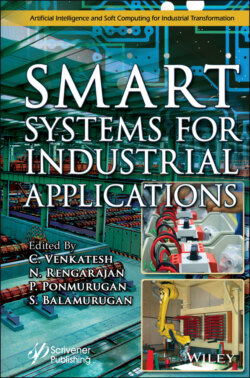Читать книгу Smart Systems for Industrial Applications - Группа авторов - Страница 34
1.5.3 Developing Autonomous Capability is Key for Remote Healthcare Management
ОглавлениеRemote monitoring is a robust model of healthcare. The advent of wearable devices aided in the smart healthcare application, in turn, enabling quicker clinical diagnosis and ease of disease prediction. The host of sensors is deployed in healthcare, uniquely placed inside the body either as implants or sensing devices over the physical body. Many of these can also communicate with small handheld devices such as smartphones or digital assistants. Dynamic and Interoperable Communication Framework (DICF) is primarily designed [28] to improve efficiency and enhance the decision-making capabilities of these wearable sensors. It optimizes various constraints of a sensor, namely, lifetime, storage capacity, handling multiple communication channels, and decision-making. The radio transmitter is used by sensors to interact with Aggregator Mobile Device (AMD); it can be a mobile platform. Information received is distinguished by the physiological source or based on sensor types. Periodic sensing for the collection of data varies with the kind of sensor and the human body. This periodic sensing is called a session. A session is, in turn, capable of sensing both periodic and event while monitoring is in progress. Pattern and range are clearly defined for transmitting data from AMD to service provider or clinic. So, when their data which does not fall within this range, an abnormality detected. AMD quickly generates an emergency notification and prioritizes transmission. In such events of AMD transmits completed sensed data to the clinic or the service provider without requesting the permission of end-users or patients.
Before the trigger of emergency is actuated, local machine learning algorithm checks for early diagnosis and first aid suggestions. Machine learning starts to establish causes and conditions using sensory data with varied conditions of patients and different patient data. Data collected and analyses at a local level significantly increase as different learning algorithms are applied to the results for further analysis. AMD performs the role of the hub by collecting data and relaying it to the clinic of the service provider, data accumulation at periodic intervals, and data gathering post applying algorithms. With the capacity of AMD, there is a significant improvement in processing capability at the local level. Data is stored as an Electronic Medical Record (EMR), which is interconnected with the notification system and monitoring unit. This enables a process of classification and decisions based on regression models. This decision-making model improves the performances of wearable devices in terms of event detection and emergency interval identification in a remote monitoring system. DICF aids in building a robust sensor dependent personal healthcare system. It also facilitates data collection, event detection, analysis, and communication with interconnected wearable sensors. AI-based remote healthcare system is shown in Figure 1.9.
Figure 1.9 AI-based remote healthcare management.
